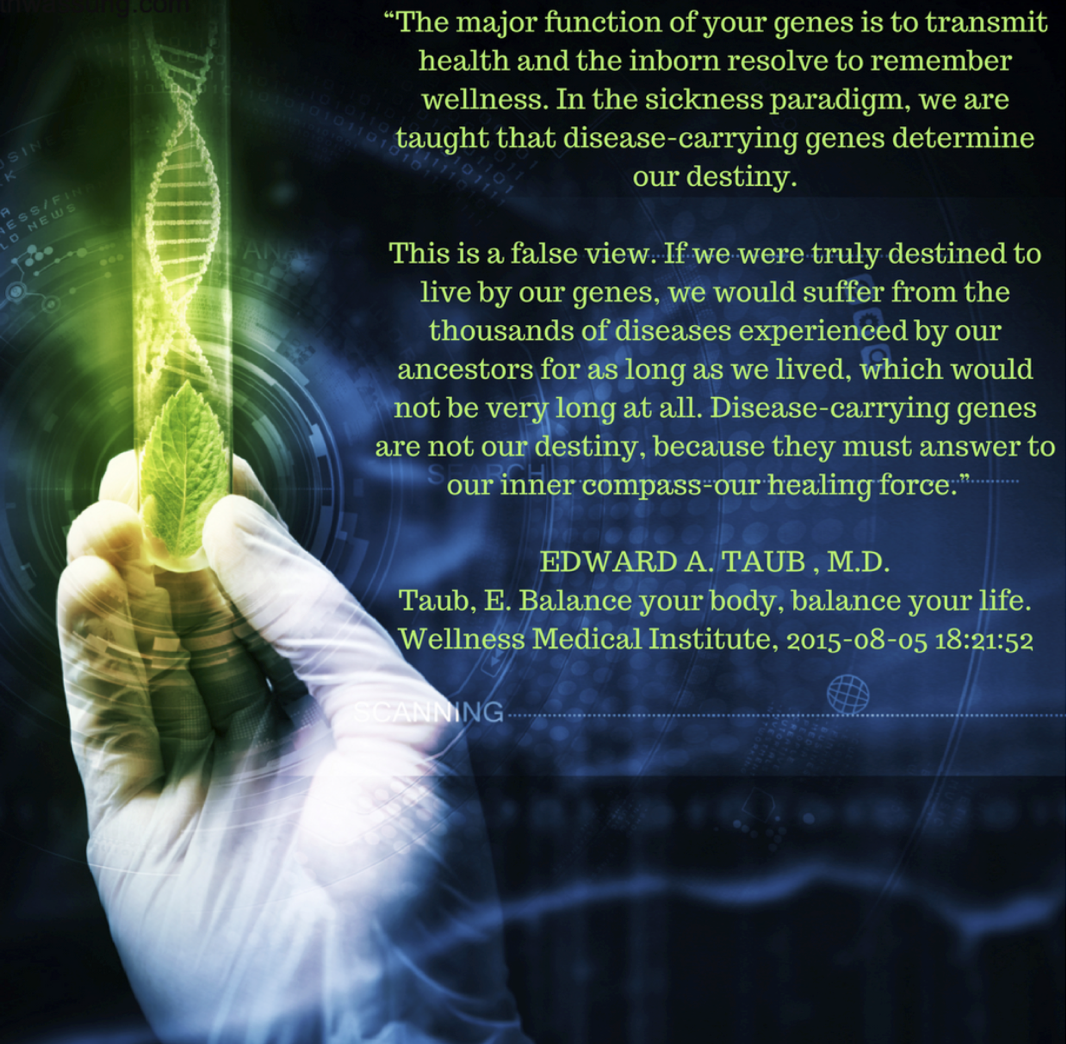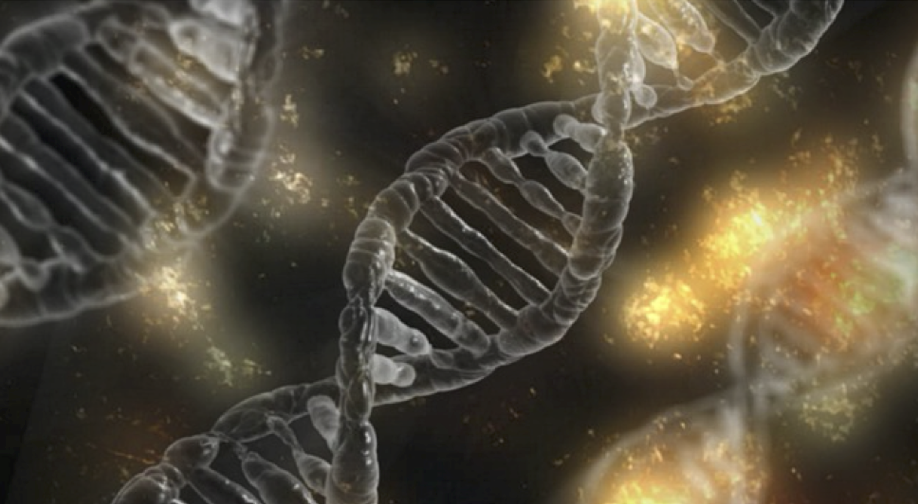Can Chiropractic Affect Your Genes?
For decades we have known DNA and genes are passed down from our ancestors. Over time, our genetic code mingles from generation to generation, resulting in future generations having a very different gene pool than we do today. Something that is not often talked about though, is epigenetics.
The study of epigenetics states that expression of our genes is determined by our environment, such as the food we eat, the amount and type of exercise we do, the amount of stress we deal with on a day to day basis, hours of sleep we get, how we live our life essentially, and the new idea, how our nervous system is functioning. How can chiropractic affect our genes and specifically, what part of our DNA?

Each of our 23 chromosomes has telomeres, protective protein-like caps at the end of our DNA. They protect our chromosomes from erosion, breaking apart and/or recombining or fusing with other DNA strands. The term telomere originates from the Greek telos, which means “end” and meros which means “part”. If we do not have these telomeres, our DNA strands can be frayed and damaged6. By having telomeres, it helps our cells function properly so they can carry out their necessary day to day tasks6.
Why Is Telomere Length Relevant?
There has been no direct causation as to what specifically changes telomere length, but there have been several studies looking at the correlation between telomere length and overall health 7,8,9,10,11,12,13,14. A study out of Harvard Medical School showed that shortening of telomere length may be the best way to look at cellular aging14. Telomere length is often used to determine our biological age vs. our chronological age (number of years). Some health conditions correlated to the shortening of telomeres are:
- dyskeratosis congenita8,12
- cancer8,12
- premature aging7,9,13,14
- immune system function9
- osteoporosis 5,10,12
- diabetes15,16,17
- atherosclerosis18
At birth our telomeres are the longest they will be and get shorter and shorter as we age1,7,9,13,14. The telomere length is also affected by the things you do on a day to day basis2. Chiropractic care that helps to restore proper structure to the spine can help to reduce nerve interference in your body so your body can function better neurologically3. By improving the function of your body neurologically, we can change the length of your telomeres5. Lastly, patients under long term chiropractic care demonstrate higher levels of serum thiol antioxidant levels, which reduces oxidative stresses on our cells, helping to achieve a longer healthier life4.



Not only does chiropractic help you feel better if you are dealing with pain, but it helps your body to function better, both biomechanically and neurologically, potentially affecting the telomeres in your chromosomes! This means that chiropractic can have a positive influence epigenetically by changing the environment in your body. This also suggests that chiropractic is not only good for neck pain and low back pain, but is beneficial to your body all the way down to the cellular level. Since genes are passed down from generation to generation, this suggests that getting regular chiropractic checkups can affect the future generations of tomorrow!
When we think of health and our genes, we need to understand how we live our lives now can affect the genes that may be expressed in our children, grandchildren, and other future generations. Get your spine checked to see if misalignments in your spine are inhibiting the functioning of your body, decreasing the quality of your life, and potentially shortening your telomere length!
Click here to review study.
References
- Blackburn EH, Epel ES. Comment: Too toxic to ignore. 2012;490:169–171.
- Aubert G, Lansdorp P. (2008) Telomeres and Aging. Physiol Rev 88: 557-579
- Armanios M, Blackburn E. The Telomere Syndromes. Nat Rev Genet. 2012;13 (10): 693-704
- Kaszubowska L. Telomere shortening and ageing of the immune system. J Physiol Pharmacol. 2008;59: 169-86
- Valdes A, Richards J, Gardner J, Swaminathan R, et al. Telomere length in leukocyctes correlates with bone mineral density and is shorter in women with osteoporosis. Osteoporos Int. 2007;18:1203-1210
- Valdes A, Andrew T, Gardner J, Kimura M, et al. Obesity, cigarette smoking, and telomere length in women. www.thelancet.com. 2005;366:662-664
- Oeseburg H, Rudolf A, Weik, Harst P. Telomere biology in healthy aging and disease. Eur J Physiol. 2010; 459:259-268
- Sahin E, Depinho R. Linking functional decline of telomeres, mitochondria and stem cells during ageing. Nature. 2010;464:520-528
- Jaskelioff M, Muller F, Paik J, Thomas E, Jiang S, et al. Telomerase reactivation reverses tissue degeneration in aged telomerase deficient mice. Nature. 2011;469:102-106.
- Adaikalakoteswari A, Balasubramanyam M, Mohan V. Telomere shortening occurs in Asian Indian Type 2 diabetic patients. Diabet Med. 2005; 22:1151-1156
- Jeanclos E, Krolewski A, Skurnick J, Kimura M, Aviv H Warram JH, Aviv A. Shortened telomere length in white blood cells of patients with IDDM. Diabetes. 1998;47:482-486
- Sampson MJ, Winterbone MS, Hughes JC, Dozio N, Hughes DA. Monocycte telomere shortening and oxidative DNA damage in type 2 diabetes. Diabetes Care. 2006;29:283-289.
- Brouilette SW, Whittaker A, Stevens SE, van der Harst P, Goodall AH, Samani NJ. Telomere length is shorter in healthy offspring of subjects with coronary artery disease: support for the telomere hypothesis. Heart. 2008;94:422-425.
- Rizvi S, Raza StT, Mahdi F (2014) Telomere length variations in aging and age related diseases. Curr Aging Sci 7: 161-167.
- Aviv A (2008) The epidemiology of human telomeres: Faults and promises. J Gerontol A Biol Sci Med Sci 63: 979-983.
- Uchida K, Nakajima H, Sato R, Yayama T, Mwaka ES, et al. (2009) Cervical spondylotic myelopathy associated with kyphosis of sagittal sigmoidal alignment: Outcome after anterior or posterior decompression. J Neurosurg Spine 11: 521-528.
- Fedorchuk C, Lightstone DF, McCoy M and Harrison DE. (2017) Increased telomere length and improvements in dysautonomia, quality of life, and neck and back pain following correction of sagittal cervical alignment using chiropractic biophysics technique: a case study. J Molecular and Genetic Med 11: 1-5
- Campbell CJ, Kent C, Banne A, Amiri A, Pero RW (2005) Surrogate indication of DNA repair in serum after long term chiropractic intervention a retrospective study. J Vert Sublux Res 2005: 1-5.

